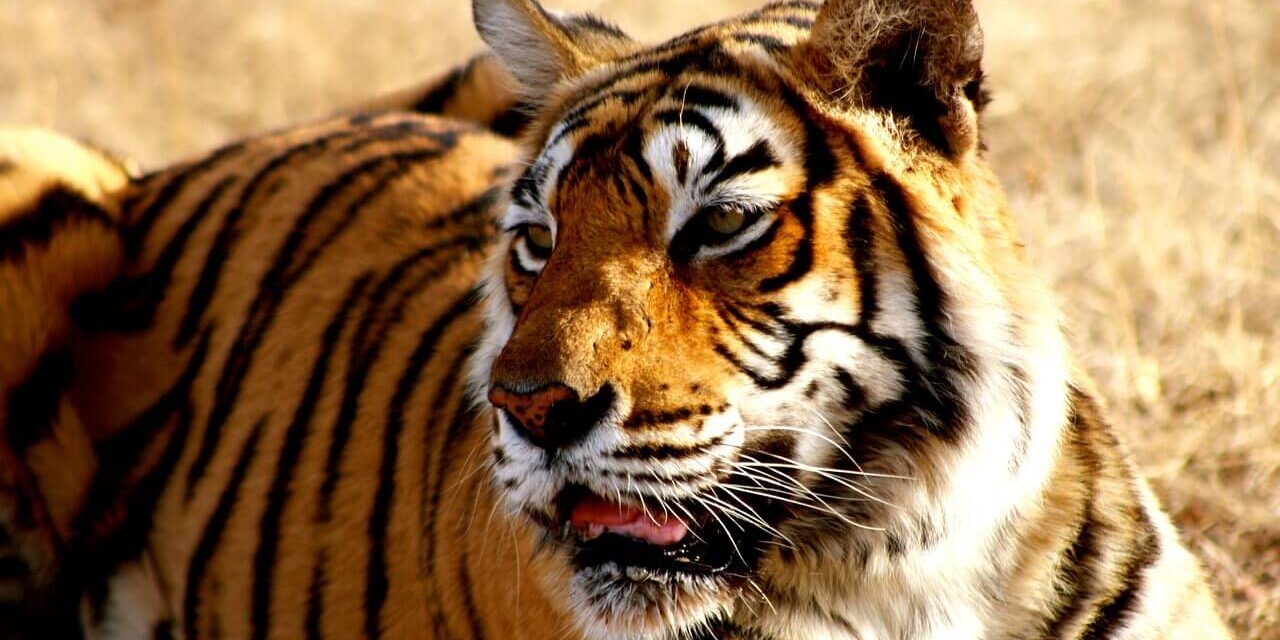Introduction
The Namdapha Tiger Reserve, the country’s 15th Tiger Project, was established in 1983. Its core area is 1985.245 square kilometres, and its buffer is 245 square kilometres. Thus, the Reserve has a total area of 1985 square kilometres.
In reality, the river name Namdapha flows from Daphabum (Dapha is the name of the hill, and Bum is the pinnacle of the hill) and joins the Noa-Dehing River.
This river crosses the National Park directly in a north-south direction, hence the name Namdapha.
Location of Namdapha Tiger Reserve:
The location of Namdapha Tiger Reserve is defined by the latitude range of 27°23′ to 27°39’N and the longitude range of 96°15′ to 96°58’E.
In the Arunachal Pradesh province’s Changlang district sits Namdapha National Park & Tiger Reserve.
The Namdapha Tiger Reserve now occupies what was once a reserve forest. On October 2, 1972, it was designated a wildlife sanctuary under the Assam Forest Regulation of 1891.
In accordance with the Wildlife (Protection) Act of 1972, it was later designated a national park on May 12, 1983.
On March 15th of that year, it was designated as a tiger reserve by the Indian government’s Project Tiger Scheme.
The climate of Namdapha Tiger Reserve:
Due to its location 27° North of the equator, the Namdapha Protected area is geographically in the subtropical zone and experiences a subtropical climate.
The Protected Area’s altitude ranges from 200 metres to 4571 metres, and the region is also a zone of frequent rainfall, so the climate of the area changes from place to place.
The region’s mountains experience what is described as a mountain climate, whilst the low-lying plains and valleys have a tropical climate.
The following sorts of seasons can be generally categorised:
a. The pre-monsoon season runs from March to May. b. The cold season runs from December to February. c. From June to September is the south-west monsoon season; d. October to November is the post-monsoon season.
History of Namdapha Tiger Reserve:
Namdapha Tiger Reserve was first designated as a wildlife sanctuary in 1972, then as a national park in 1983, and finally, in the same year, it was made a tiger reserve as part of the Project Tiger initiative.
Two Singpho words—”nam” for water and “dapha” for origin—were combined to give the river its name because it rises from the Dapha Nam glaciers.
Faunal Species found in Namdapha Tiger Reserve :
a. Mammals :
In the park, specimens of the Namdapha flying squirrel (Biswamoyopterus biswasi) were initially gathered and described.
It is critically endangered and indigenous to the park. It was last observed in one valley inside the park in 1981.
The park is home to a wide variety of animal species due to the elevation range of 300 to 4,500 m (980 to 14,760 ft) and plant zones from evergreen, moist deciduous to temperate broadleaved and coniferous forest types to alpine flora.
The park is home to four pantherine species, including the clouded leopard (Neofelis nebulosa), snow leopard (Panthera pardus), tiger (Panthera tigris), and leopard (Panthera pardus).
Dhole, Malayan sun bears, Indian wolves, and Asiatic black bears are among the other predators that can be found in the protected region.
Red pandas, red foxes, yellow-throated martens, Eurasian and Oriental tiny-clawed otters, spotted linsangs, binturongs, Asian palm civets, small and large Indian civets, masked palm civets, marbled cats, fishing cats, Asian golden cats, and two mongoose species are among the smaller carnivores.
Indian elephant, wild boar, musk deer, Indian muntjac, hog deer, sambar, gaur, goral, mainland serow, takin, and bharal are examples of large herbivores.
The stump-tailed macaque, slow loris, hoolock gibbon, capped langur, Assamese macaque, and rhesus macaque are among the non-human primates that are present.
b. Bird Species :
1990 saw the publication of one of the earlier publications on the birds of Namdapha. There are around 425 different bird species in the park, and there are likely many more due to work being done in the upper altitudes.
Five different hornbill species have been identified in the region. In Namdapha, a number of uncommon wren-babbler species have been identified.
Laughing thrushes, parrotbills, fulvettas, shrike babblers, and scimitar babblers are some other bird species.
Only the Patkai and Mishmi Hills and surrounding areas in Northern Myanmar are home to the uncommon snowythroated babbler, which can be found in Namdapha.
The rufous-necked hornbill, green cocoa, purple cocoa, lovely nuthatch, Ward’s trogon, ruddy kingfisher, blue-eared kingfisher, white-tailed fish eagle, Eurasian hobby, pied falconet, white-winged woodpecker are among the other rare, restricted-range, or globally endangered species.
c. Butterflies and moths :
There are numerous species of Lepidoptera in the area. Here, a variety of different insects can be found in equal abundance with butterflies and moths.
Numerous uncommon kinds of butterflies were spotted, according to observations made at the National Camp that the Bombay Natural History Society held in October 2014.
The Koh-i-noor, the naga treebrown, the red caliph, the cruiser, the wizard, the fluffy tit, and the East Himalayan purple emperor are a few of these.
Transport in Namdapha Tiger Reserve :
In Namdapha, Jeeps are likely your sole option for transportation. The jeeps are also only allowed to travel within specific areas of Namdapha.
And the most crucial thing is that you need to have a Restricted Area Permit before entering it, regardless of whether you’re in a jeep or any other type of vehicle.
They are given out to groups with at least four individuals.
How to Reach :
By Air :

The Mohanbari Airport in Dibrugarh, which is 160 km away, is the airport nearest to the National Park.
Although there is good road access from the park to Diburgah Airport, it is still preferable to fly from Guwahati, even if it is 600 kilometres away.
It takes approximately 2 hours and 35 minutes to fly from Delhi to Dibrugarh, with fares ranging from INR 4,500 to 8,500, and another 5 hours to take a taxi from the airport there.
There are frequent flights from Indigo and Spicejet to Dibrugarh.
By Rail :

Tinsukia, which is well connected by road and is about 140 kilometres from the main site of Namdapha National Park, is home to the closest train station. You can rent a taxi from Tinsukia to get to the park.
There is a daily train from New Delhi to New Tinsukia Station that takes about 38 hours and costs between INR 950 and INR 1,100.
You would board a different train (with a three times daily frequency) from Tinsukia and travel for 58 minutes to get to Digboi. It takes a taxi four hours to get from Digboi to Namdapha.
By Road:

All major cities are easily accessible by road from Namdapha National Park, and a variety of public and private buses run frequently throughout the day.
If you like taking road trips, you can get on a bus or call a cab for some exciting adventures.
In roughly six hours, the route from Dibrugarh to Miao passes through Tinsukia, Margherita, Digboi, Jagun, Ledo, Namchik, and Kharsang.Numerous night buses are also accessible from Guwahati.
Conclusion :
India’s Namdapha Tiger Reserve is a true jewel. The reserve is significant for fostering ecotourism in the region in addition to its unusual flora and wildlife.
A trip to the reserve can have a profound impact on one’s life.
By engaging in responsible tourism, you may also aid in the preservation of the region.
What are you still holding out for? For a one-of-a-kind and amazing adventure, pack your luggage and head to Namdapha Tiger Reserve!
If you’re planning to visit other Tiger Reserve, be sure to check out our various blog Manas Tiger Reserve






Recent Comments